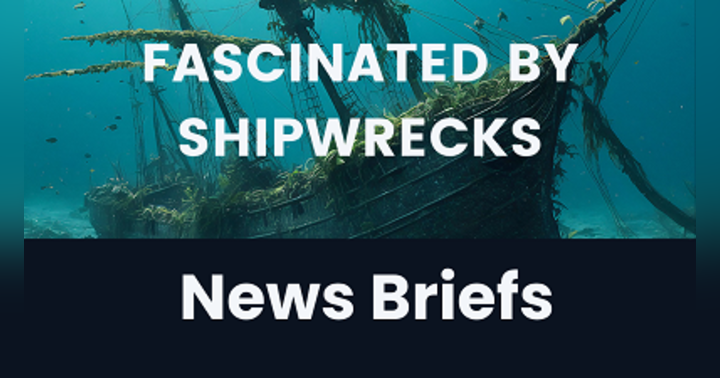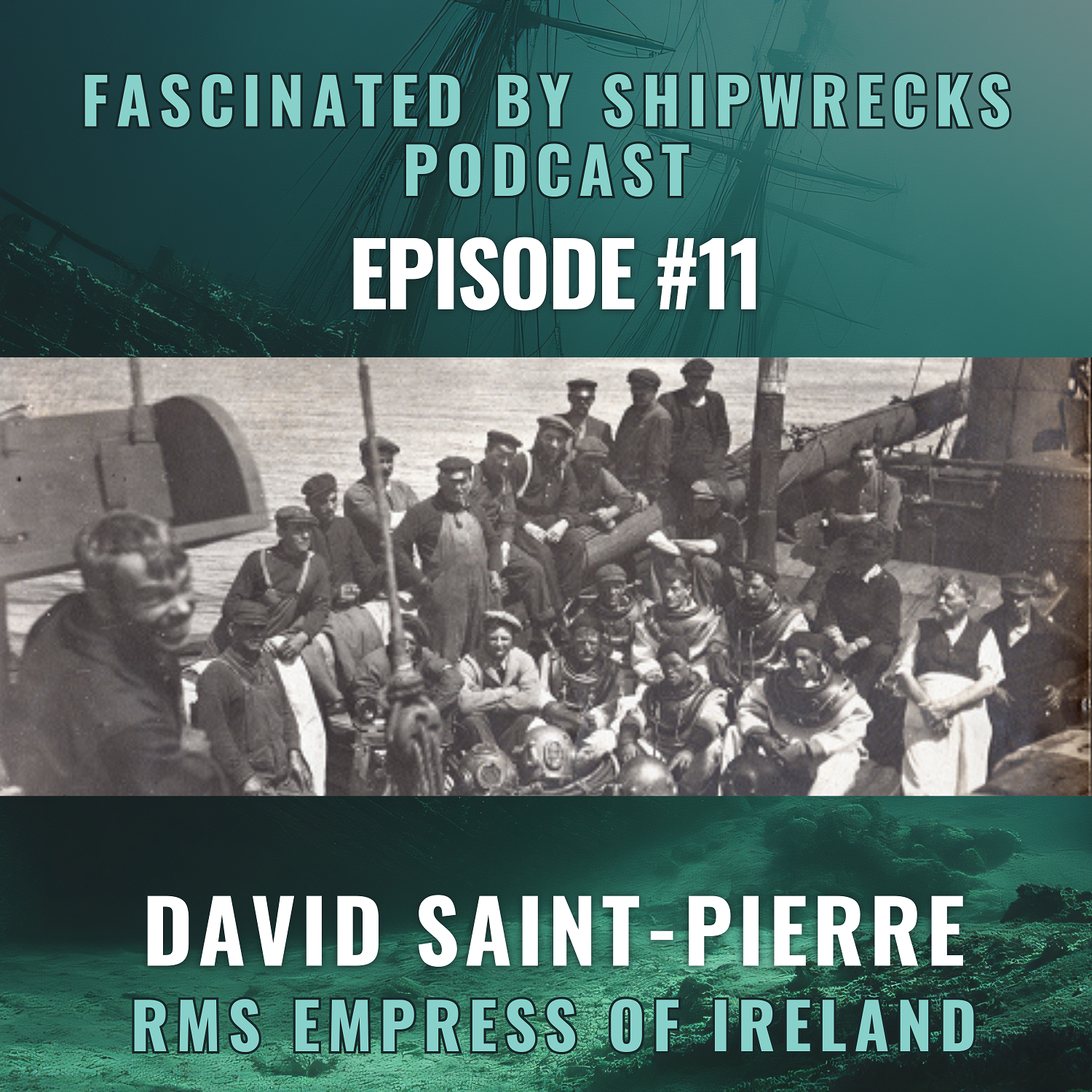Empress of Ireland Shipwreck: Rare Photos Reveal 1914 Salvage Operations

Empress of Ireland, 1906 (credit: David Saint-Pierre)
In this episode of Fascinated by Shipwrecks, host Kathy A. Smith sits down with historian David Saint-Pierre to explore the haunting story of the Empress of Ireland, a luxury ocean liner that sank in May, 1914 with over 1,000 lives lost. Though often overshadowed by the Titanic, the Empress remains one of the deadliest maritime disasters in Canadian history. Saint-Pierre, whose life’s work has been dedicated to preserving this story, shares how he went from curious local to one of the world’s leading experts on the ship.
A Lifelong Maritime Connection
Saint-Pierre grew up near Rimouski on the Gaspé Peninsula, where the mighty St. Lawrence River is often referred to as "the sea" for its vastness. His family lineage was deeply tied to the maritime world; lighthouse keepers, shipbuilders, schooner captains, and that heritage laid the foundation for his fascination with ships and the ocean.
His interest intensified in 1985 with the discovery of the Titanic wreck, but it wasn’t long before he realized there was a major shipwreck in his own backyard: the Empress of Ireland, which sank just off Rimouski. By the 1990s, Saint-Pierre was guiding visitors at the maritime museum in nearby Father Point and soon became immersed in historical research that has lasted nearly three decades.
The Night of the Sinking
Launched in 1906 along with its sister ship the Empress of Britain, the Empress of Ireland was a prominent ocean liner on the Canadian route. On May 28, 1914, she left Quebec City with 1,477 people aboard for her first summer voyage to Liverpool. That night, after dropping off her river pilot at Father Point, she encountered dense fog near the St. Lawrence River’s mouth.
The Norwegian collier, the Storstad, was approaching. Despite attempts to communicate via foghorn, the two ships tragically collided around 2 a.m. The Storstad tore a massive hole in the Empress’s starboard side. Within 14 minutes, the Empress of Ireland sank, taking 1,012 lives with her, more than the number of passengers lost on the Titanic.
Survivors as Victims
One of Saint-Pierre’s key insights is his focus not just on the dead, but on the survivors, many of whom lived with trauma for the rest of their lives. He recounts the story of a Swiss survivor who never spoke about the disaster, not even to close family. For him, the idea that survivors are also victims is a deeply human element that needs to be acknowledged.
A Window into the Past: The Salvage Photos

While much has been written about the sinking, few knew the extent of the salvage efforts that followed. That changed when Saint-Pierre stumbled upon an online auction in 2021, where two mislabeled photographs piqued his interest. Recognizing the scene instantly, he contacted the seller, who turned out to have an entire photo album of over 500 images, including 56 from the 1914 salvage operation.
These photos opened a whole new avenue of research. Incredibly, divers worked through the summer to retrieve mailbags, silver bars, and even a massive safe from the wreck. For three and a half months, the small French-Canadian town of Rimouski was the center of a complex and dangerous operation, the largest salvage effort in Canadian history up to that point.
Lessons in Regulation and Failure
Saint-Pierre also highlights how even after the Titanic disaster, maritime safety improvements were insufficient. Though the Empress was retrofitted with enough lifeboats and had a relocated wireless shack for faster communication, the rapid sinking and dark confusion of night meant most passengers didn’t stand a chance. Many of the surviving passengers and crew had nightmares well into their 80s.
Continuing the Legacy
Now a member of the board of directors for the Empress of Ireland museum in Rimouski, Saint-Pierre takes part in annual commemorations. These ceremonies, especially when attended by descendants of passengers or Salvation Army representatives (many of whom perished in the sinking), bring a somber emotional resonance to the history he’s studied for decades.
He’s written two books on the Empress, one of which focuses on the newly discovered salvage photos and the local impact in 1914. In the Wake of the Empress of Ireland: Rescue, Salvage and Investigations in the Summer of 1914 was released in May 2025 from The History Press. His next area of interest? The lengthy legal battles that followed, which lasted into the 1930s.
Not Just “Canada’s Titanic”
Saint-Pierre is passionate about ensuring the Empress of Ireland is remembered on her own terms. While he understands the comparisons to the Titanic help raise awareness, he firmly believes this ship’s story deserves its own place in maritime history.
Want more fascinating stories from the deep?
Catch the full interview with David Saint-Pierre on the Fascinated by Shipwrecks podcast. Listen or watch anytime. You'll see more photos in the video version!
© 2025 Fascinated by Shipwrecks






